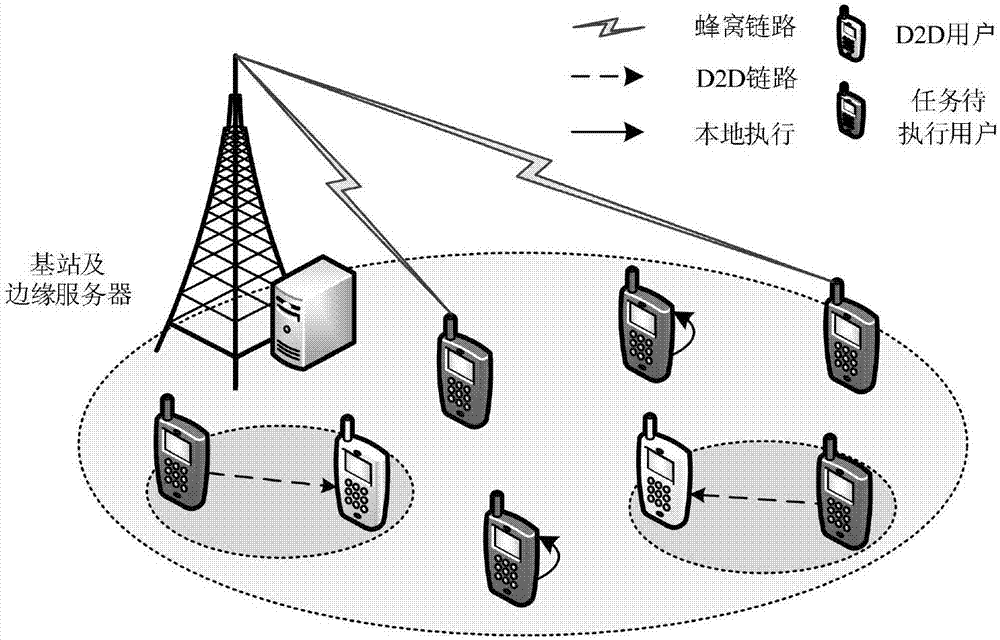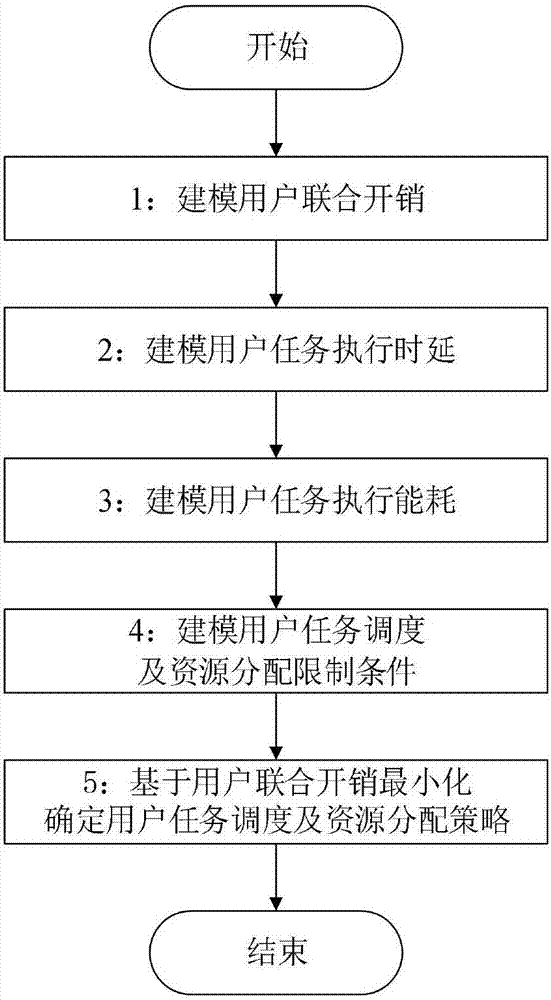Joint task scheduling and resource allocation method supporting uninstallation of D2D-edge server
An edge server and task scheduling technology, applied in network traffic/resource management, electrical components, wireless communication, etc., can solve the problem of difficult to guarantee transmission performance and user experience, difficult to allocate resources with heterogeneous characteristics of access networks, and network energy consumption. Increase and other problems to achieve the optimal allocation of communication and computing resources, minimize user overhead, and optimize scheduling strategies
- Summary
- Abstract
- Description
- Claims
- Application Information
AI Technical Summary
Problems solved by technology
Method used
Image
Examples
Embodiment Construction
[0026] The preferred embodiments of the present invention will be described in detail below with reference to the accompanying drawings.
[0027] The present invention proposes a joint task scheduling and resource allocation method that supports D2D-edge server offloading. Assuming that users need to perform certain computing tasks, both the mobile edge computing server and the D2D peer user have certain task computing and processing capabilities, and users can use Local execution can also realize task offloading through mobile edge computing servers or D2D peers, modeling user joint overhead as the optimization goal, and realizing joint optimization of user task scheduling, communication resources, and computing resource allocation strategies.
[0028] A method for joint task scheduling and resource allocation that supports D2D-edge server offloading in the present invention assumes that in a network where cellular communication and D2D communication coexist, between two diffe...
PUM
 Login to View More
Login to View More Abstract
Description
Claims
Application Information
 Login to View More
Login to View More - R&D
- Intellectual Property
- Life Sciences
- Materials
- Tech Scout
- Unparalleled Data Quality
- Higher Quality Content
- 60% Fewer Hallucinations
Browse by: Latest US Patents, China's latest patents, Technical Efficacy Thesaurus, Application Domain, Technology Topic, Popular Technical Reports.
© 2025 PatSnap. All rights reserved.Legal|Privacy policy|Modern Slavery Act Transparency Statement|Sitemap|About US| Contact US: help@patsnap.com


